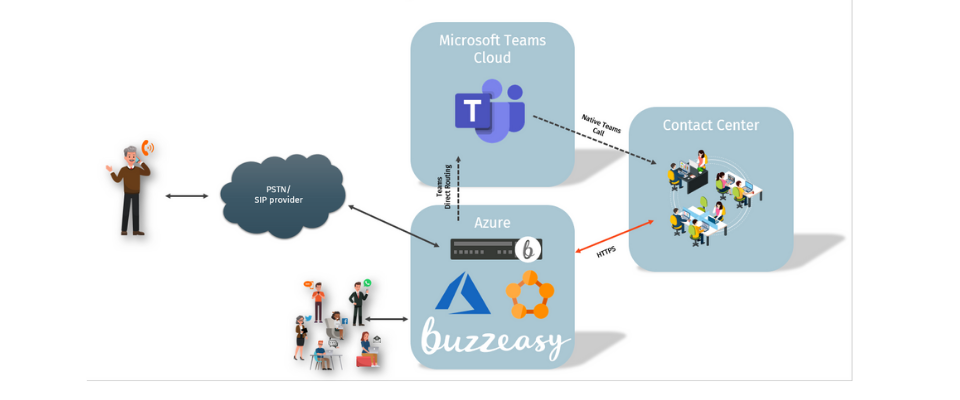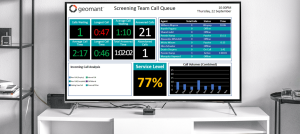Microsoft Teams has taken the world by storm.
In the last few years, the solution has evolved from being a future-ready replacement for Skype for Business to a comprehensive UCaaS environment. Not only did Microsoft Teams achieve a record number of users in 2020 (115 million per day), but the solution is also gaining more meeting minutes, phone calls, and video conferences every day.
Today, we’re going to look at the two options companies have for linking Microsoft Teams to their UC environment: direct routing and calling plans.
Understanding Calling in Microsoft Teams
Microsoft implemented calling solutions for Microsoft Teams to convert the service into a complete UCaaS offering. Microsoft Teams supports VoIP calling to connected Teams users and landlines or mobile phones through the Public Switched Telephone Network. To use Teams for calling, you need a phone system license, phone number, and connectivity to the PSTN.
Since every business has its own needs, Microsoft doesn’t limit you to just one calling connection point. You can either use:
- Calling plans: Procuring phone system licensing and trunks from Microsoft. Microsoft’s calling plans give you a number and the functionality of PSTN services.
- Direct routing: Accessing phone licenses from Microsoft while using your own existing telecoms provider for trunking purposes.
The Pros and Cons of Microsoft Calling Plans

Calling plans from Microsoft are available on a per-user basis, so you pay only for the functionality you need. When you acquire a calling plan from Microsoft, it comes with a bundle of minutes (local and international) and access to PSTN services (like routing and call queuing), and phone numbers. The calling plans are available through Microsoft 365, and you don’t need any support from an additional phone carrier.
Depending on your needs, you can either choose an international calling plan or a domestic alternative. This ensures that all kinds of businesses and different sizes of companies can get the best experience from Microsoft.
The Pros of Microsoft Calling Plans:
- Simplicity: If you’re a small business with basic business phone needs, then Microsoft calling plans will give you quick and easy access to all the functionality you need. There’s no need to go and track down a separate provider. Plus, you get the benefits of having one bill for your productivity, calling, and collaboration tools.
- Microsoft support: Microsoft’s calling plans are managed by the Microsoft team, which means you know you’re getting a high quality of security and support. However, Microsoft does have some limitations in what it can offer as a phone system provider, as it isn’t technically a communications company.
- Convenience: With access to your Microsoft calling plans, you’ll have a cloud-based solution that gives you the freedom to upgrade and expand your strategy however you choose. You can access your phone system on any device, anywhere.
The Cons of Microsoft Calling Plans:
- Only available in some countries: Microsoft calling plans are only available in certain countries. If your destination isn’t on that list, this makes managing your calling through Microsoft a lot more complicated.
- Expensive: Depending on your needs, Microsoft calling plans can be quite costly. They also mean giving up any loyalty discounts that you’ve earned by staying with the same phone provider for a while now.
- Limited features: Microsoft isn’t a dedicated communications provider. The calling options that you can get through these dedicated plans might be good enough for some smaller companies but not ideal for larger brands.
The Pros and Cons of Microsoft Direct Routing

Direct routing is usually the go-to choice for companies that already have a significant investment in their existing business phone tools. If you’ve spent years with a phone system provider, then you may have access to features and discounts with them that you don’t want to give up.
You can route Microsoft Teams to your PSTN using SIP trunks and a session border controller through a direct routing connection. This means that Teams can connect to a wide range of telephony providers. Experts say that around 90% of companies that use Microsoft Teams for telephony will use direct routing.
The Pros of Direct Routing:
- Consistency: If you already have a significant investment in your existing communication plan, and your employees are comfortable with the tools and features they can access through your provider, direct routing means that you don’t have to switch or migrate any users.
- Geographical freedom: With direct routing, you can use Microsoft Teams as your calling solution in a range of countries beyond what’s available with Microsoft Calling plans. You can even choose bundles and build tailored solutions with your chosen provider.
- Simplicity: Companies can access direct routing for Microsoft Teams as a fully managed service. You don’t have to worry about the complexities of things like number porting to get your communications stack up and running again.
- Affordability: Direct routing is generally a more cost-effective option than Microsoft’s Calling Plans. You can take advantage of discounts and bundles and adapt your phone services to suit your needs.
- Flexibility: Direct routing gives you the freedom to choose your own telephony provider and all the features you want to access. This could mean tapping into extra UCaaS features, like advanced auto attendants, routing, queues, and voicemail functionality. Some direct routing partners can even help you to build out your Microsoft investment even further, with access to things like compliant recording and contact centers for Microsoft Teams.
The Cons of Direct Routing:
- Working with another company: Direct routing plans means you need to work alongside another company with Microsoft, so you don’t get all of your bills from one place. This can mean that your financial team has more to keep track of.
- Requires more consideration: You’ll need to do your research to find the partner that you feel most comfortable using for your direct routing experience. This means dedicating more time and effort to examining the market.
- May require more specialized rollouts: If you have specialist requirements from your direct routing providers, it may take a while to determine how to build the best package for you. This wouldn’t be the case if you were just getting a basic call package from Microsoft.
Which Option is Right for You?
These days, Teams isn’t just a way to keep employees connected in the growing environment for remote work. It can also be the hub of your entire communication stack, delivering business calling functionality, recordings, and even contact center tools.
There’s no one-size-fits-all way to make the most of your Microsoft Teams investment. The only thing to do is assess your communication landscape and choose the option that makes the most sense for your team.











